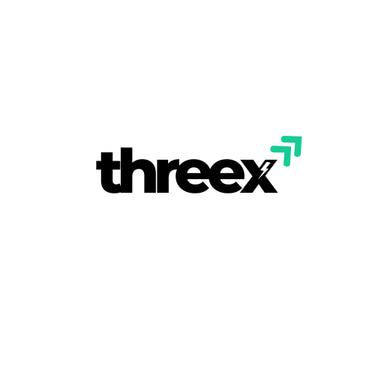Online Courses vs. Traditional Learning: Pros and Cons
5/18/20253 min read


Online Courses vs. Traditional Learning: Pros and Cons
Welcome to the ultimate education showdown: Online Courses vs. Traditional Learning. It’s the modern gladiator fight between pixel-powered lessons and chalkboard nostalgia. As digital transformation reshapes everything from shopping to socializing, it’s no surprise that education is in the ring too. But which contender delivers the real knockout punch?
If you’re on the fence about whether to enroll in an online course or trek back to campus, this blog is your brutally honest, stat-backed, and slightly cheeky guide to making that decision.
The Rise of Online Learning: A Digital Revolution
Let’s start with the obvious: online education has exploded. In fact, the global eLearning market is expected to hit a staggering $645 billion by 2030, up from $226 billion in 2020 (Source: Statista). That’s not just a trend—it’s a takeover.
Platforms like Coursera, Udemy, and edX are churning out courses faster than TikTok trends. Why? Because online learning is flexible, affordable, and, quite frankly, addictive (who knew we’d binge-learn like we binge Netflix?).
Online Learning Advantages – Flexibility, Affordability, and Access: Learn in Pajamas – Because Why Not?
The biggest flex of online courses? Flexibility. Whether you're a night owl or a 5 AM productivity freak, online courses adapt to your schedule, not the other way around.
Case in point: Meet Sara, a full-time nurse in Texas. She completed Google’s Professional IT Support Certificate on Coursera during night shifts. A year later, she pivoted into tech and doubled her income—no student loan, no campus, just determination and WiFi.
Budget-Friendly Bytes of Knowledge
Let’s talk money. A four-year college degree in the U.S. costs an average of $35,000 per year. In contrast, many online certifications cost less than your Netflix subscription. Want to become a UX designer? Google’s UX Design Certificate costs under $300 on Coursera.
Online learning breaks down the financial barriers of education—no overpriced textbooks, no dorm fees, no ramen noodles diet required.
Global Classrooms and Local Convenience
Online education also democratizes learning. Whether you’re in Nairobi or Nebraska, if you’ve got an internet connection, you’ve got access to the world’s top professors. And let’s be real: attending an Ivy League class in your boxers has its appeal.
Traditional Learning Advantages – Structure, Networking, and Social Skills
The Human Touch of In-Person Learning
Sure, online courses offer freedom. But sometimes, we need the structure. Traditional classrooms provide routine, face-to-face mentorship, and—let’s admit it—less temptation to binge “Love Is Blind” mid-lecture.
In-person learning still reigns supreme for certain fields—like medicine, engineering, or acting—where hands-on experience and real-time feedback are non-negotiable.
Building a Real-Life Network (With Coffee, Not Emojis)
You can’t replace campus connections with Slack channels. Traditional college is more than academics—it’s the cafeteria convos, dorm debates, and yes, awkward icebreakers. These spontaneous moments often lead to real-world opportunities.
Example: Mark Zuckerberg started Facebook from his Harvard dorm. Would he have built the same empire from an online course forum? Doubtful.
Emotional Intelligence & Soft Skills
Let’s face it—Zoom fatigue is real. In-person education often fosters better communication skills, team collaboration, and conflict resolution. Being in a classroom forces us to deal with people, personalities, and presentations. The awkward group projects we hate? They’re secretly soft skill gold mines.
Online Courses Disadvantages – Self-Discipline Required
Netflix is the Enemy
Online learners need superhero-level self-discipline. With no one taking attendance or nagging about assignments, the temptation to procrastinate is sky-high. In fact, online course completion rates range from 5% to 15%, depending on the platform (Source: HarvardX and MITx Study).
Not everyone thrives in this model. If your attention span rivals a goldfish’s, traditional learning might be your better bet.
Traditional Learning Disadvantages – Cost and Inflexibility
Crushing Debt, Anyone?
Student loan debt in the U.S. surpassed $1.7 trillion in 2024, and much of that comes from traditional universities. That’s enough money to buy Twitter (twice). For many, the return on investment just doesn’t add up—especially when a comparable education exists online.
Outdated Curricula and Bureaucracy
Universities can be slow-moving ships. By the time they update a curriculum, the industry has already evolved. In contrast, online platforms pivot quickly—often co-creating courses with companies like Google, IBM, and Meta.
So… Which One Wins? (Spoiler: It Depends)
If you’re looking for structure, lifelong friends, and a “college experience,” traditional learning is your jam. But if you’re juggling a job, raising a family, or want to upskill fast, online courses are your golden ticket.
And here’s a wild thought: why not do both?
Hybrid learning is booming. Institutions like Harvard, Stanford, and MIT now offer blended programs. It’s the best of both worlds—live lectures mixed with online flexibility. Think of it as the educational equivalent of a double-shot espresso: structured, but with a kick.
Conclusion: Education is Evolving—Are You?
Whether you're swiping through online classes or browsing dorm brochures, remember this: what you learn is more important than how you learn it. Pick the path that suits your life, your goals, and your coffee habits.
Online courses are here to stay. Traditional learning still has its place. But the real magic happens when you stop debating and start learning—whichever format you choose.
Ready to Level Up?
Explore our top-rated online courses and start your transformation today—no overpriced textbooks required
